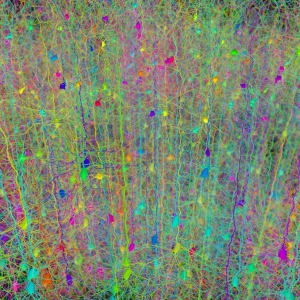TUESDAY, 6 MARCH 2012
Holding a picture you’ve just seen in your 'mind's eye' is a task that requires long-distance communication between visual and memory regions of the brain. The visual area of the brain is about as far from the eyes as possible, at the back of the head, whilst short-term memory involves activation of prefrontal cortex, at the front of the brain. Researchers at the Max Planck Institute for Biological Cybernetics in Tübingen, Germany, have discovered a potential mechanism for this communication.The team measured electrical activity in visual and prefrontal cortex of monkeys whilst the animals performed a visual memory task. The monkeys were shown two images separated by a short delay and then had to indicate whether they were the same or not. Around half the image pairs were identical and half different.
The results, published in Nature Neuroscience, revealed that both regions showed strong 'theta band' activity – a particular set of low frequency oscillations. Moreover, there was striking synchrony between the oscillations of the two regions for a short period following the image presentation. The more synchronised the brain regions were during a trial, the more likely it was that the monkey correctly identified whether the pictures were the same or different.
It is thought that the purpose of this synchronisation is to increase the efficiency of communication, a concept that the leading author, Stefanie Liebe, explained using the following analogy: “It is as if you have two revolving doors in each of the two areas. During working memory, they get in sync, thereby allowing information to pass through them much more efficiently than if they were out of sync.”
Synchronisation of brain waves may well apply to other situations where complex integration of information occurs between brain regions; tasks that are, as of yet, poorly understood.
Written by Rosy Southwell
DOI: 10.1038/nn.3038

